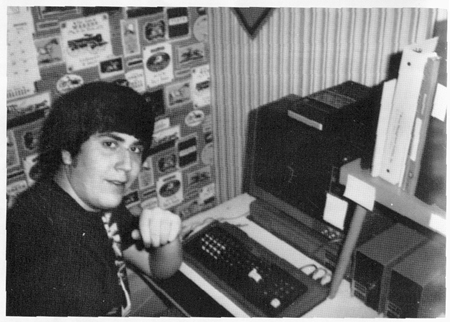Two stories this week caught me up in a little bit of old computer nostalgia. The first was that chip manufacturer Zilog was ending production of the Z80 CPU chip, and the second was that NASA managed to restore communications with the Voyager 1 spacecraft.
Now to be honest I didn’t know that Zilog still made the Z80, and I was impressed it had such a long run. My very first computer was a Radio Shack TRS-80 that I got for Christmas in 1978, when I was 12 years old. At a price of $599 (about $3k today) it was an expensive present, but my father saw it as an investment in my future. I spent a lot of time on that machine, and I thought it was cool that “TRS” were the consonants in my first name.
Compared to the simplest computers in use today it is a dinosaur. The Z80 had a 1.78MHz clock (that’s “mega” hertz) and could only address 64kB of memory. The operating system and programming language (BASIC) were stored in ROM, leaving the rest for RAM. My initial machine came with 4kB of RAM and in March of 1979 was when I wrote my first program that wouldn’t fit under that limit.
I upgraded it to “Level II” ROM (which ate up 16kB) and 48kB of RAM to max out the machine, and I eventually added two floppy disk drives.
Back in the day finding information on computers, especially in my rural North Carolina town, was difficult. I got a lot of it from subscribing to computer magazines, which is how I learned about assembly. I couldn’t afford an actual assembler so I would hand code it into the system by typing in pairs of hexadecimal digits. Now what ties this whole experience to Voyager 1 is that what the team at NASA did to restore communications was similar to things I did with the TRS-80.
Another thing I couldn’t afford was a printer. Dot matrix printers at the time ran about $2k, or about $9500 in today’s currency (you could buy a new Toyota Corolla for less than $4k). My Dad, however, worked for General Electric and they had just discontinued the TermiNet 300 – a beast of a machine – and he managed to get one cheap. The way it printed was crazy. It had a bank of 118 “hammers” that faced the paper. In between the hammers and the paper was a band containing little metal “fingers” oriented vertically, and on each finger was one of the characters the machine could print. The band rotated around at high speed, and when the machine wanted to produce a character, the ink ribbon would pop up and a hammer would hit the specific finger for that character as it flew by. That it could do this at 30 characters a second was amazing, and loud.
The problem was that it didn’t have a parallel interface and was instead serial, so I had to buy an RS-232C board and write a printer driver. It was then that I kind of fell in love with the Z80 instruction set. Note that I had to come up with the instruction, convert it to the proper hex code and then “POKE” it into memory (I could then “PEEK” to make sure it worked). Luckily printer drivers aren’t that complicated (take a byte as an input, send it to the interface as an output). It worked, and I made a lot of extra money typing in term papers for other students (the advantage of the TermiNet was that it was typewriter quality output).
I can only imagine the NASA engineers sitting around doing the same thing to fix Voyager (hand assembling code, not typing term papers).
Modern computing today is so abstracted from what I learned. Now you can just ask GenAI to write a program for you. I’m not one of those old guys who thinks what I went through was better, but it was nice to see some of those techniques prove useful today.
And I should point out that Voyager 2 is working just fine, which goes to show that you should never buy the first release of a technology product (grin).
